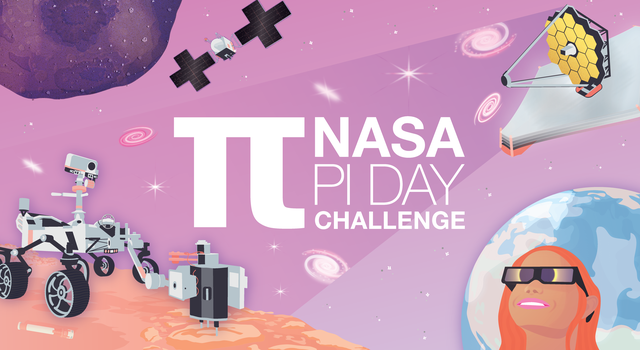Pi Day Notice and Wonder / Metal Math
Metal Math

When our solar system was formed about 4.6 billion years ago, small formations called asteroids were left behind. Asteroids come in all shapes and sizes, and some are made of rocks, whereas others are made of different clays and metals. One asteroid in particular, Asteroid Psyche, has caught the attention of scientists because it is believed to have a core similar to that of planet Earth. Have you ever wondered how scientists are able to explore deep into the core of an asteroid, and how we can learn about the formation of our planet from our understanding of an asteroid?
I notice —
- measurements on the computer screen;
- the units of measurement are kilograms per meters cubed;
- a satellite in the sky;
- the satellite has solar panels;
- an asteroid and the Sun;
- a satellite or telescopic image of an asteroid;
- the image is being captured from a dome;
- the cross-section of the asteroid with one-quarter of it shown as a solid three-dimensional figure; and
- an asteroid that is approximately oval, but not a perfect oval.
What else do you notice? Share your thoughts on social media using the hashtag #PiDayNASAxNCTM and join the conversation!
I wonder —
- what the measurements represent;
- how big the asteroid is; whether it is bigger than the Earth; whether it will hit the Earth;
- what metal is inside the asteroid;
- how we can learn about our planet from our understanding of an asteroid;
- what the dimensions of the asteroid are;
- how far the asteroid is from the telescope;
- how far the asteroid is from the Sun;
- if the asteroid is orbiting the Sun;
- if the asteroid is traveling along the asteroid belt; and
- whether life can exist on the asteroid.
What else do you wonder? Share your thoughts on social media using the hashtag #PiDayNASAxNCTM and join the conversation!

The graphic above was provided to NCTM by NASA's Jet Propulsion Laboratory (JPL) and is part of their
10th Annual Pi Day Challenge.
Each year, JPL challenges students to solve some of the same problems NASA scientists and engineers do using pi! Each of the four problems uses math, science, and engineering to educate students about some of the agency's Earth and space missions.